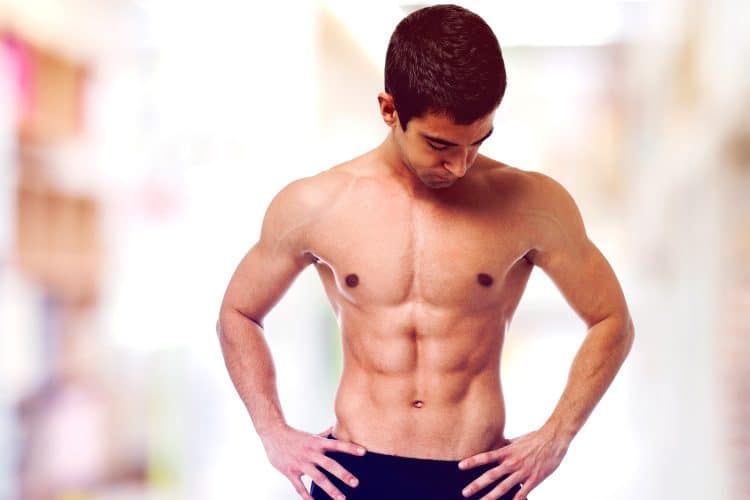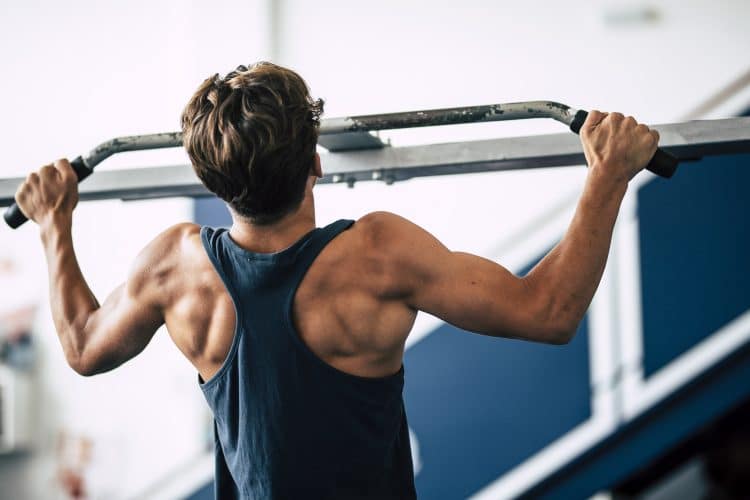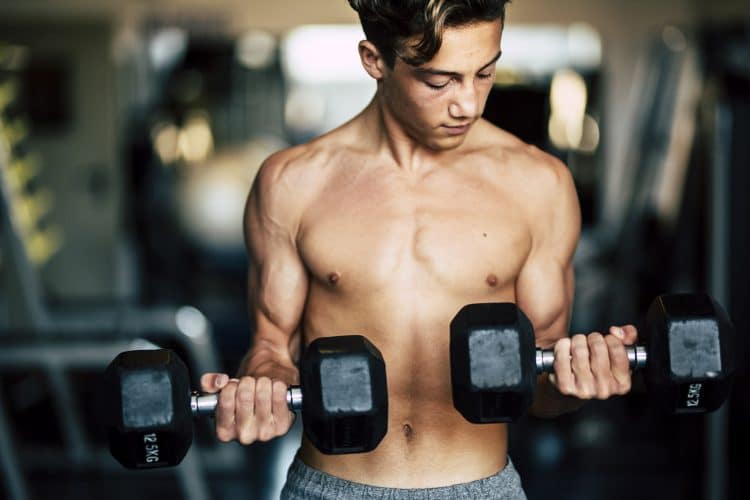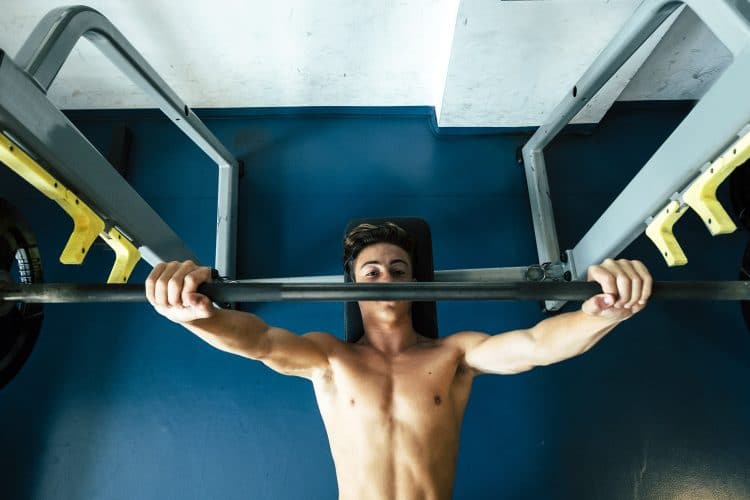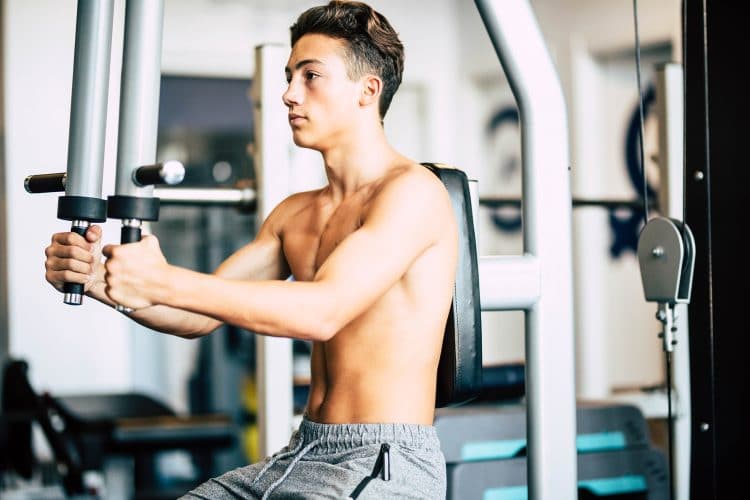Different people are exposed to the fitness lifestyle at different points in their life. While some teenagers have an innate interest in fitness, others become bodybuilding fans when they see their favorite actor sporting a shredded physique in his latest movie.
The past few years have been interesting, to say the least. As coronavirus wreaked havoc, most of us were ordered to be locked inside our homes. While people who were motivated (and happened to have a sizeable Instagram following) stuck to their fitness routines, the rest of us found solace in Netflix and chilling.
It was especially bad for teenagers who attended classes, submitted projects and hung out with their friends on their phones and laptops. Gym and health clubs were amongst the first to be shut down as COVID spread worldwide. We believe this was a big blow for the fitness industry and teenagers who now had to wait a year before they could start their fitness journey.
Now that things are getting back to normal, we have an influx of young newbie lifters in gyms around the globe.
Starting Your Fitness Journey
Unless you are an Arnold Schwarzenegger incarnation participating in weightlifting contests and breaking records at the age of 16, chances are you are pretty lost about where you should start your fitness journey.
Does Lifting Stunt Your Growth?
Level Up Your Fitness: Join our 💪 strong community in Fitness Volt Newsletter. Get daily inspiration, expert-backed workouts, nutrition tips, the latest in strength sports, and the support you need to reach your goals. Subscribe for free!
This is probably the most common question (usually raised by parents) about teenagers lifting weights.
We are happy to report that lifting weights does not stunt growth.
The bodybuilding and fitness world is full of myths and half-truths that refuse to die, regardless of what science and experts say.
The claim that kids will stop growing if they lift weights is not supported by any research or scientific evidence. On the other hand, research suggests professionally designed resistance training programs can have many benefits for children and adolescents, including:
- Increasing strength and bone strength index (BSI)
- Decreasing fracture risk and rates of sports-related injury
- A boost in self-esteem and interest in fitness
Related: Dorian Yates Shuts Down Popular Bodybuilding Myths
So, is the belief that lifting weights can stunt growth completely baseless?
The myth that lifting weights can stunt growth usually comes from concern over kids damaging their growth plates. As it turns out, injuries to the growth plates in immature bones can indeed stunt growth.
However, it should be noted that injuries to growth plates are not a common phenomenon. They are usually a result of lifting with an incorrect form, lifting weight that is too heavy, or lifting without supervision.
But at the same time, which sport comes with zero chances of injury? According to studies, about 15 to 30 percent of all childhood fractures occur due to recreational activities or sports involving growth plates.
The chances of kids injuring their growth plates while working out are minimal if they use moderate weights and lift with the correct form.
But what are growth plates, you ask?
Growth plates are the cartilaginous areas of growing tissue at the ends of long bones like the thigh bone. These bones are soft during a child’s growing years. The flexible nature of growth plates allows room for your bones to grow.
Growth plates become hardened when a kid reaches physical maturity. These cartilaginous areas are prone to damage in an individual’s younger years.
Objectives of Teenager Workout Routine
Our goal with this teenager workout routine is not to get you jacked for a show. Do not expect to step on a Mr. Olympia stage any time soon. Objectives of the teenager workout program include:
1. Building a Foundation
If you want to build a shredded physique, you need to ensure that you are starting on the right foot. You cannot carve a world-class physique without building a solid foundation.
Consider this workout regimen a safe and effective introduction to the weight room. It will teach you how to tackle free weights, help build core stabilizers, mind-muscle connection, and put on muscle mass.
2. Learning the Basics of Bodybuilding and Weightlifting
Ask a rookie how to build muscle, and they will probably tell you to do a few dumbbell curls and gulp down protein shakes throughout the day. We hate to break this to you, but building a chiseled physique is easier said than done.
Not only do you need to follow an effective training routine, but you also have to learn the right lifting form to make the most of the exercises. About the gulping down of protein part, well, there is some truth to it.
Check Out: Gym Bro Test: Find Out If You Are The Next BroScienceLife
16-Week Teenager Workout Routine
Now that we are out of the panic island, let us talk about the optimal teenager workout routine.
This 16-week teenager workout routine consists of two parts:
- Week 1-4: Bodyweight Training
- Week 5-16: Resistance Training
The first four weeks of the training regimen act as a primer for the next twelve weeks. Do not worry if you cannot hit a gym. Although weeks 5-16 include resistance training, you will need nothing more than a pair of dumbbells.
Week 1-4: Bodyweight Teenager Workout Routine
The first 16 weeks of your training life do not have to be the most intense. Do not listen to the bros who tell you to jump into the bodybuilding lifestyle. You will be better off easing into your newfound passion.
Level Up Your Fitness: Join our 💪 strong community in Fitness Volt Newsletter. Get daily inspiration, expert-backed workouts, nutrition tips, the latest in strength sports, and the support you need to reach your goals. Subscribe for free!
During these 16 weeks, you do not need to train more than thrice a week, but do not let this hold you back. If you enjoy what you are doing, go ahead and log in three more days, following the same routine.
Day 1
- Push-up: 3 sets of 15 reps
- Step-up with Knee Raise: 3 sets of 15 reps (each side)
- Squat: 3 sets of 15 reps
- Burpee: 3 sets of 15 reps
- Dips: 3 sets of 10 reps
- Single-Leg Glute Bridge: 3 sets of 15 reps
- Crunch: 3 sets to failure
Day 2
- Pull-up: 3 sets of 15 reps
- Mountain Climber: 3 sets of 15 reps (each side)
- Squat: 3 sets of 15 reps
- Pike Push-up: 3 sets of 15 reps
- Glute Kickback: 3 sets of 15 reps
- Reverse Crunch: 3 sets of 15 reps
- Plank: 3 sets of 30-seconds
Day 3
- Wide-grip Pull-up: 3 sets of 15 reps
- Wide Push-up: 3 sets of 15 reps
- Jump Squat: 3 sets of 15 reps
- Crab Walk: 3 sets of 20 steps (10 forward, 10 backward)
- Oblique Crunch: 3 sets of 15 reps
- Frozen V-sit: 3 sets of 15 reps
- Lunge: 3 sets of 15 reps
Week 5-16: Resistance Training Teenager Workout Routine
You will be following a three-day push, pull, and legs training split in this program. Since you are a beginner, you do not need to complicate your workouts by targeting one muscle group a day.
Do not get us wrong. We are not going to go easy on you. Wrapping up all your muscle groups in three days will allow you a four-day rest period. But like we said earlier, if you dig what you are doing, feel free to train six days a week.
Day 1: Push Day
The first day of the week will focus on your chest, shoulders, and triceps. Resistance exercises will help you build a foundation and develop muscle memory. If you do not have access to a flat bench at home, you could perform the exercises lying down on the floor.
- Barbell Bench Press: 3 sets of 8-12 reps, 90-sec rest
- Floor Dumbbell Fly: 3 sets of 8-12 reps, 90-sec rest
- Seated Dumbbell Side Lateral Raise: 3 sets of 8-12 reps, 90-sec rest
- Dumbbell Tricep Kickback: 3 sets of 8-12 reps, 90-sec rest
- Push-up: 3 sets of 20 reps, 90-sec rest
- Crunch: 3 sets of 20 reps, 90-sec rest
Day 2: Pull Day
For the second training day of the week, we will shift our focus to the pulling muscles – upper back, lats, rear delts, and biceps. If you lack the upper body strength to perform a bodyweight pull-up, use a resistance band for assistance by looping it around the pull-up bar.
- Pull-up: 3 sets of 8-12 reps, 90-sec rest
- Bent-over Dumbbell Row: 3 sets of 8-12 reps, 90-sec rest
- Dumbbell Deadlift: 3 sets of 8-12 reps, 90-sec rest
- Bent-over Rear Delt Fly: 3 sets of 8-12 reps, 90-sec rest
- Dumbbell Bicep Curl: 3 sets of 8-12 reps, 90-sec rest
- Floor Dumbbell Skull Crusher: 3 sets of 8-12 reps, 90-sec rest
- Reverse Crunch: 3 sets of 8-12 reps, 90-sec rest
Note: If you do not have a pull-up bar, you are leaving a lot of gains on the table. A pull-up bar is a piece of versatile training equipment that can be used in a variety of exercises. Check out our review of the 10 best pull-up bars on the market.
Day 3: Legs
Are you ready for the first leg day of your lifting journey? More specifically, are you ready to limp around for the next few days?
If you are wondering, no, we are not biased with training legs. We love pumping our guns as much as you do. But, legs are the biggest muscle group and deserve a dedicated training day.
- Goblet Squat: 3 sets of 8-12 reps, 90-sec rest
- Dumbbell Lunge: 3 sets of 8-12 reps, 90-sec rest
- Dumbbell Romanian Deadlift: 3 sets of 8-12 reps, 90-sec rest
- Goblet Sumo Squat: 3 sets of 8-12 reps, 90-sec rest
- Standing One-Leg Calf Raise: 3 sets of 20 reps (each leg), 90-sec rest
- Russian Twist: 3 sets of 20 reps (each side), 90-sec rest
Remember: The goal here is to learn how to lift with the correct form and not outlift Larry Wheels.
Cardio
Oh, so you thought you could skip cardio. Not so fast, young man.
The teenager workout routine consists of two cardio routines:
1. For individuals looking to build muscle mass while maintaining body weight
If you are in this category, you need to be doing 15 minutes of HIIT cardio before every training session. You do not need to purchase a hit-tech heavy-duty treadmill for your cardio session. You could go outdoors for a run.
For the first minute of your cardio session, you should maintain a moderate speed. Go all out for the second minute. Repeat this cycle for 15 minutes.
2. For individuals who want to build muscle while losing body weight
If you are looking to shed bodyweight, you will be performing two cardio sessions every day. The first would be a 15 minute HIIT session, as mentioned above.
For the second workout, you will be doing 30-minutes of LIIT cardio after your workout. The LIIT session could be a moderate-paced jog around your block or thirty minutes on a spin bike.
Recovery
Resting is a key component of the teenager workout routine. You should be sleeping at least eight hours every night. On top of that, you should ideally be taking a rest day after each workout session.
You break your muscle fibers when you train. They only grow back bigger and stronger in deep sleep. If you do not allow your body enough time to recuperate after your workouts, your gains will stagnate.
How to Lift Weights Safely
We know you are still thinking about what we said about the growth plates. Being the lifesavers we are, we have put together a list that can help you avoid damages to the cartilaginous areas. Here are the things teenagers need to keep in mind while lifting:
1. Take it Slow
For the first six months of your weight lifting journey, your main aim should be to learn how to perform exercises correctly. Start with light weights and perform a higher number of reps. Focus on yielding a mind-muscle connection and feeling your muscles during your workouts. Weights can come later.
2. Forget Getting Big
We can understand you want to look like Big Ramy, but sadly, that cannot happen. Do not get us wrong, we are not doubting your dedication or intent, but studies show that majority of the benefit that a child will get from weightlifting will be neuromuscular.
3. Start with the Basics
We admit that Jefferson squats and Arnold presses look really cool, but that does not mean you should be performing them in your first week in the gym.
However, you should not hold yourself back from trying harder variations of exercises like squat, push-up, pull-up, and plank.
4. Get a Spotter
If you are planning on lifting weights, you should not do it without a spotter. Hiring a professional can burn a hole in your pocket, but it will pay dividends in the long term.
Wrapping It Up
Starting your fitness journey can be overwhelming and daunting. We have taken out the guesswork and saved you the time you would have otherwise spent learning through trial and error.
Now that you have all the tools you need to build a solid foundation for your physique, we cannot wait to see your transformation. Go get it, tiger!

